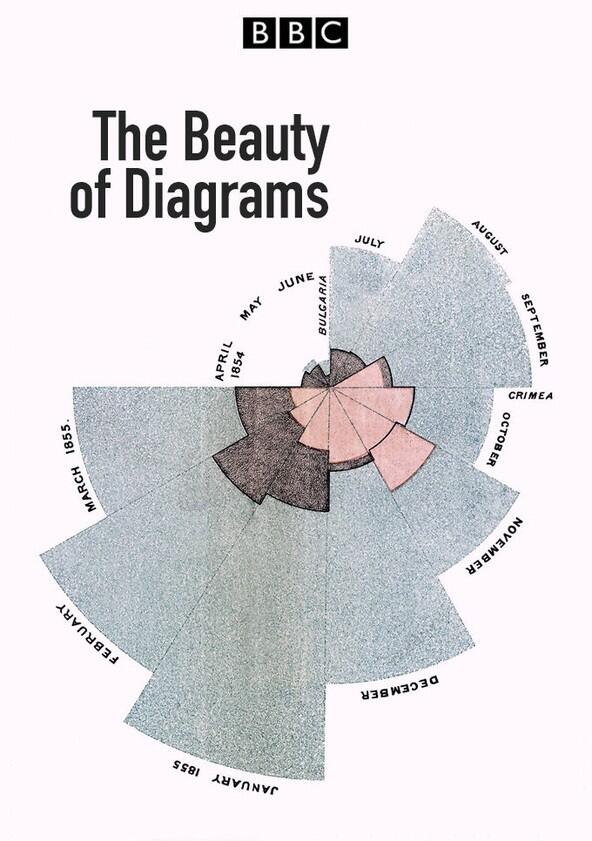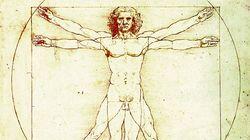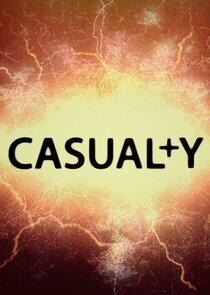The Beauty of Diagrams - Season 1

Season 1

Episodes

Vitruvian Man, Leonardo da Vinci
He looks at Leonardo da Vinci's world-famous diagram of the perfect human body, which has many layers from anatomy to architecture, and defines our species like no other drawing before or since. The Vitruvian Man, drawn in the 1480s when he was living and working in Milan, has become one of the most famous images in the world. Leonardo's drawings form a vast body of work, covering every imaginable subject in spectacular detail: from feet, skulls and hands to muscles and sinews; from hearts and lungs to buildings, bridges and flying machines.
Vitruvian Man perfectly synthesises Leonardo's passions for anatomy, for the mechanics of the human body and for geometry. It is also full of surprises, illustrating an ancient architectural riddle set out 1,500 years earlier by the classical writer Vitruvius about the relative proportions of buildings and men; a riddle that, even today, still fascinates and beguiles experts and viewers alike.

Revolutions of the Celestial Spheres, Nicolaus Copernicus
When Polish priest and astronomer Nicolaus Copernicus developed his extraordinary theory of a sun-centred universe 500 years ago, he was flying in the face of both science and religion. Mankind had believed for thousands of years that the earth was at the centre of the cosmos, and to disagree was to risk derision and accusations of heresy.
For decades he was too afraid to publish, but the arrival of a young German scientist gave Copernicus courage, and his book and its extraordinary diagram were published in 1543, when he was on his deathbed. His image of the heliocentric universe changed forever our understanding of the Cosmos, and of our place in it.

Newton's Prism
In the mid-1660s, Isaac Newton bought a pair of prisms at a fair near Cambridge, which were to be the basis of a series of experiments that would unlock a secret that had occupied scientists for centuries - the nature of light itself.
To explain what he had done, Newton created a diagram. It is called The Crucial Experiment and is a pivotal image in scientific history, a graphic moment when the ancient world was overturned by modern science. Newton demonstrated that white light is not pure, but made up of a number of different colours, the colours of the rainbow.
Newton's ideas transformed our knowledge of what we see and how we see, and the prism and its refracted colours became a captivating image. From fibre-optics to the cover of Pink Floyd's Dark Side of the Moon album, Newton's work went on to influence centuries of science and art.

The Rose Diagram, Florence Nightingale
Can a diagram save lives? Florence Nightingale is best known as the Lady of the Lamp, who cared for thousands of soldiers in appalling conditions during the Crimean War of 1854-6. What is less well-known is that she was a superb statistician, and the first to use a statistical graphic as a call to action.
After the war, Nightingale wrote a passionate report on why the soldiers had died in such large numbers and it revealed the astonishing fact that out of 18,000 deaths, 16,000 had been due to infectious diseases in hospital rather than battle wounds. The report included her revolutionary and controversial 'Rose Diagram', whose message was potent and direct - hospitals can kill. The diagram was designed to persuade the British government that, if sanitation in hospitals was improved, many deaths could be avoided. Nightingale's pioneering diagram was a catalyst in the creation of better and cleaner hospitals that would go on to save thousands of lives.

DNA, James Watson and Francis Crick
In the last hundred years, one diagrammatic image stands above all others. It represents a scientific breakthrough that has been voted the most significant in the 20th century, more important than penicillin or the first working computer.
The double helix shows us what the structure of our DNA looks like. Francis Crick and James Watson announced their discovery in Nature magazine in April 1953, and their article included a diagram of the structure by Odile Crick. The image she drew has become so well known and loved that we now find it in a whole range of consumer products - there are double helix ties, dogs chews and even a perfume.
So has the image of the double helix become so divorced from its original scientific setting that no one knows what it really is or what it stands for?

Pioneer Plaque
When the unmanned space probe Pioneer 10 took off from Cape Canaveral in March 1972, it had on board a remarkable diagram. The Pioneer Plaque was designed to communicate fundamental facts about Earth and its inhabitants to life on other planets. In carefully engraved graphic images and mathematical symbols, the plaque would reveal the Earth's location in the solar system and show extra-terrestrial intelligent life what human beings looked like.
But how could one single diagram do all that - what do you put in and what do you leave out? With its naked human figures, the plaque sparked arguments amongst feminists and conservatives.
So was it, in the end, a great intellectual game or was it the most enterprising, artistic and scientific diagram of all time, perhaps even the ultimate diagram?
Recently Updated Shows

The Wanted Man
The Wanted Man charts the rise and fall of Felix Carmichael, the elusive and powerful head of notorious British crime syndicate ‘The Capital.' Untouchable for twenty years, Carmichael is finally apprehended, but while he's held in the infamous Staplehurst prison, it becomes clear that he's been betrayed by one of his own. As the traitor moves to dismantle the empire he has built, Carmichael must risk everything in a daring escape. Willing to stop at nothing to take his revenge, if he succeeds, he'll be a wanted man once more.

My Life Is Murder
Investigator Alexa Crowe, cannot help fighting the good fight – whether it is solving murders or combatting the small frustrations of everyday life. Fearless and unapologetic, Alexa's unique skills and insights into the darker quirks of human nature, allows her to provoke, comfort and push the right buttons as she unravels the truth behind the most baffling of crimes.

The Walking Dead: Dead City
The Walking Dead: Dead City envisions the popular Maggie and Negan characters travelling into a post-apocalyptic Manhattan long ago cut off from the mainland. The crumbling city is filled with the dead and denizens who have made New York City their own world full of anarchy, danger, beauty, and terror.

Survivor
Eighteen to twenty castaways will compete against each other on Survivor. All castaways will compete to outwit, outplay, outlast and ultimately be crowned Sole Survivor.
